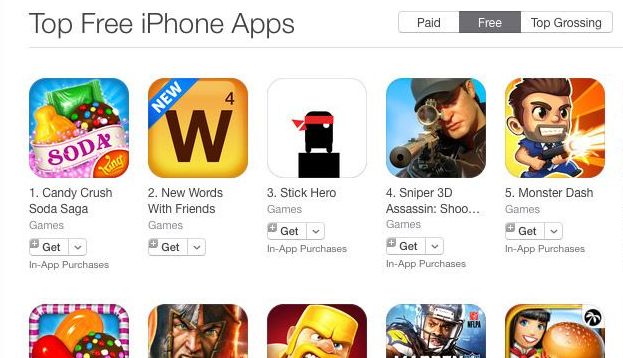The way people look at freemium-based games is changing . . . but not the nature of the games themselves.
Free-to-play games in the App Store (which is the majority of them these days) had the word “FREE” in the button used to download the app. Because of pressure from the EU, Apple has chosen to replace the word “FREE” with “GET” to avoid misleading customers. While the initial download is indeed free, the existence of in-app purchasing can lead unsuspecting customers (particularly young children) to make purchases in the game. Some games have been criticized for making the game hardly playable without purchases while still using the word “free” for marketing the game tow a wide audience.
Google performed a similar move with its Play store back in July of this year, removing the word “free” to avoid criticism. As a result of the move, the EU Commission praised Google – and then zeroed in on Apple’s use of the term, stating there was “no concrete or immediate solutions,” which ended up being “regrettable.”
This moves comes after the EU Commission highlighted several court cases highlighting certain issues revolving around “free” labeled games, according to GamesIndustry International. In the US, Apple fought a legal battle with the FTC involving kids being able to make in-app purchases through certain titles, despite the fact that they were advertised as “free.” As a result, Apple reached a settlement to the tune of $32.5 million, and vowed to make things different – which it obviously has by changing the wording on the apps.
FTC Chairwoman Edith Ramirez said the settlement with the Federal Trade Commission was “a victory for consumers harmed by Apple’s unfair billing, and a signal to the business community: whether you’re doing business in the mobile arena or the mall down the street, fundamental consumer protections apply. You cannot charge consumers for purchases they did not authorize.”
So, again, freemium-based games remain business as usual, but look for Apple to lay out better detail in terms of in-app purchases and other required costs that tie in with them.

